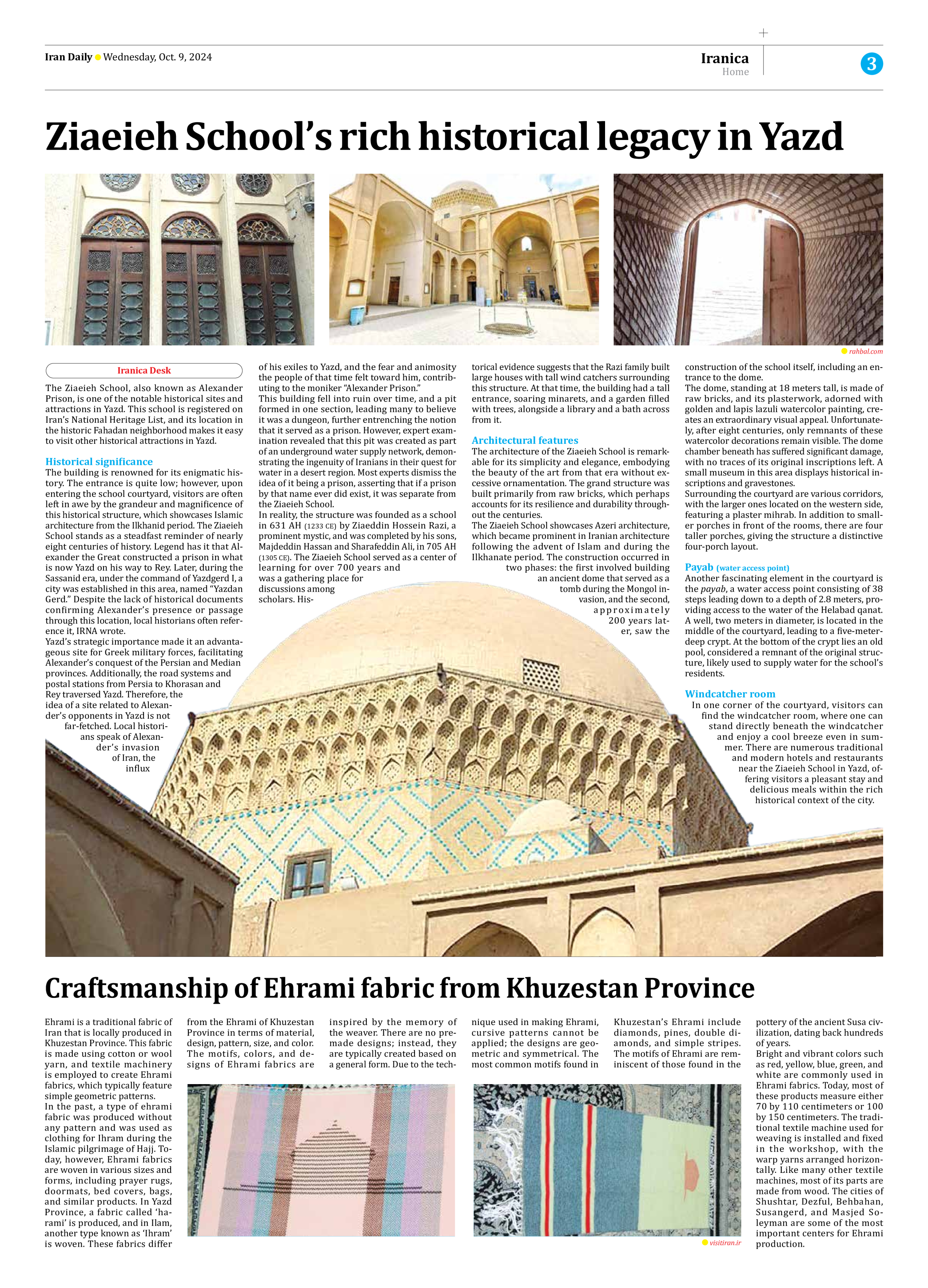
Ziaeieh School’s rich historical legacy in Yazd
The Ziaeieh School, also known as Alexander Prison, is one of the notable historical sites and attractions in Yazd. This school is registered on Iran’s National Heritage List, and its location in the historic Fahadan neighborhood makes it easy to visit other historical attractions in Yazd.
Historical significance
The building is renowned for its enigmatic history. The entrance is quite low; however, upon entering the school courtyard, visitors are often left in awe by the grandeur and magnificence of this historical structure, which showcases Islamic architecture from the Ilkhanid period. The Ziaeieh School stands as a steadfast reminder of nearly eight centuries of history. Legend has it that Alexander the Great constructed a prison in what is now Yazd on his way to Rey. Later, during the Sassanid era, under the command of Yazdgerd I, a city was established in this area, named “Yazdan Gerd.” Despite the lack of historical documents confirming Alexander’s presence or passage through this location, local historians often reference it, IRNA wrote.
Yazd’s strategic importance made it an advantageous site for Greek military forces, facilitating Alexander’s conquest of the Persian and Median provinces. Additionally, the road systems and postal stations from Persia to Khorasan and Rey traversed Yazd. Therefore, the idea of a site related to Alexander’s opponents in Yazd is not far-fetched. Local historians speak of Alexander’s invasion of Iran, the influx of his exiles to Yazd, and the fear and animosity the people of that time felt toward him, contributing to the moniker “Alexander Prison.”
This building fell into ruin over time, and a pit formed in one section, leading many to believe it was a dungeon, further entrenching the notion that it served as a prison. However, expert examination revealed that this pit was created as part of an underground water supply network, demonstrating the ingenuity of Iranians in their quest for water in a desert region. Most experts dismiss the idea of it being a prison, asserting that if a prison by that name ever did exist, it was separate from the Ziaeieh School.
In reality, the structure was founded as a school in 631 AH (1233 CE) by Ziaeddin Hossein Razi, a prominent mystic, and was completed by his sons, Majdeddin Hassan and Sharafeddin Ali, in 705 AH (1305 CE). The Ziaeieh School served as a center of learning for over 700 years and was a gathering place for discussions among scholars. Historical evidence suggests that the Razi family built large houses with tall wind catchers surrounding this structure. At that time, the building had a tall entrance, soaring minarets, and a garden filled with trees, alongside a library and a bath across from it.
Architectural features
The architecture of the Ziaeieh School is remarkable for its simplicity and elegance, embodying the beauty of the art from that era without excessive ornamentation. The grand structure was built primarily from raw bricks, which perhaps accounts for its resilience and durability throughout the centuries.
The Ziaeieh School showcases Azeri architecture, which became prominent in Iranian architecture following the advent of Islam and during the Ilkhanate period. The construction occurred in two phases: the first involved building an ancient dome that served as a tomb during the Mongol invasion, and the second, approximately 200 years later, saw the construction of the school itself, including an entrance to the dome.
The dome, standing at 18 meters tall, is made of raw bricks, and its plasterwork, adorned with golden and lapis lazuli watercolor painting, creates an extraordinary visual appeal. Unfortunately, after eight centuries, only remnants of these watercolor decorations remain visible. The dome chamber beneath has suffered significant damage, with no traces of its original inscriptions left. A small museum in this area displays historical inscriptions and gravestones.
Surrounding the courtyard are various corridors, with the larger ones located on the western side, featuring a plaster mihrab. In addition to smaller porches in front of the rooms, there are four taller porches, giving the structure a distinctive four-porch layout.
Payab (water access point)
Another fascinating element in the courtyard is the payab, a water access point consisting of 38 steps leading down to a depth of 2.8 meters, providing access to the water of the Helabad qanat. A well, two meters in diameter, is located in the middle of the courtyard, leading to a five-meter-deep crypt. At the bottom of the crypt lies an old pool, considered a remnant of the original structure, likely used to supply water for the school’s residents.
Windcatcher room
In one corner of the courtyard, visitors can find the windcatcher room, where one can stand directly beneath the windcatcher and enjoy a cool breeze even in summer. There are numerous traditional and modern hotels and restaurants near the Ziaeieh School in Yazd, offering visitors a pleasant stay and delicious meals within the rich historical context of the city.







